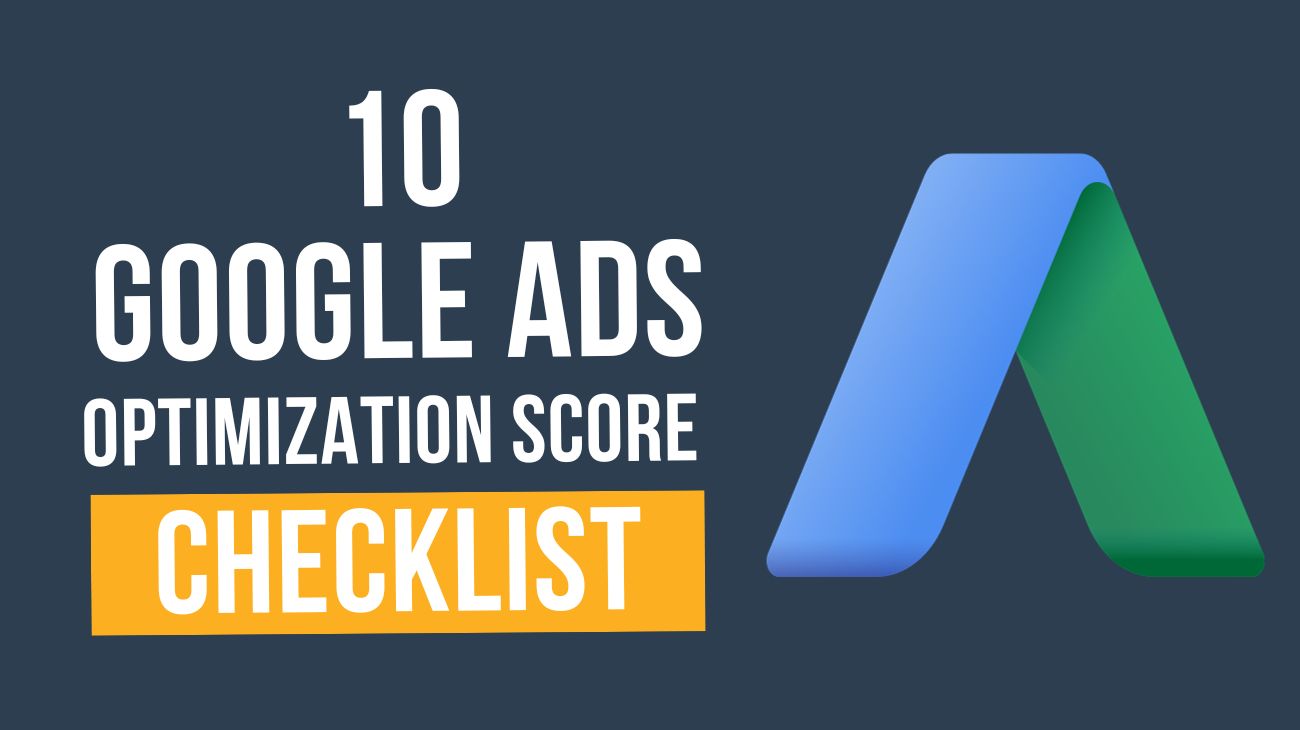In this fast-moving era of digital revolution, Google Ads work as an impactful tool for creating a powerful business effect. In today’s competitive advertising on Google, 84% of businesses use Responsive Google Ads for the smooth running of their business. There are key strategies to consider to get the most out of this marketing medium and maximize Return on Investment (ROI). For a powerful impact, tap into the potential of Google Ads by utilizing the strategies for Google Ads optimization.
In this detailed blog, we will learn about the tips to improve the performance of your Google Ads, their significance, and a checklist to follow for Google ads optimization.
Click here to learn about How to Setup Google Ads Account? A Step-by-Step Manual
Significance of Google Ads Optimization
Google Ads Optimization is a crucial step for most businesses. Google Ads optimization gives you the choice of targeting the exact audience with the right content. It helps you to spend less budget and gain more profit with the correct placement of content.
Google Ads optimization helps you to analyze the score of your ads and find ways to improve your Google ads results. To make your ad campaigns stand out, choosing Google Ads Optimizations is the best practice for generating more revenue.
7 Key Strategies for Google Ads Optimization
Google Ads Optimization is a process that involves multiple strategies and each strategy has a significant impact on business. Covering all the key strategies is necessary to optimize Google ads effectively and drive more traffic to the website.
In the next section, we will discover some potential ways to improve your Google ads results and gain the best possible results from your ad campaigns:
1 Start With Broad Research
Google ads optimization involves the rigorous research of the target audience, keywords, and growth generated by the ads. Before starting the Google Ads optimization, check the performance of your already displayed ads to compare the analytics for optimization. Dive deep by researching your niche and areas where you need optimization.
2 Know Your Target’s Demographics & Psychographics
Most businesses use the strategy of generalizing their target audience which lessens the impact of ad optimization. To perfectly target your right audience, understand their age, gender, locality, preferences, goals, challenges, and platforms they are using for search queries, and contact information. Knowing your ideal buyer will make your future ads more accurate and relevant in targeting the most suitable audience.
3 Select the Accurate Keywords
One of the crucial steps you can utilize for your ad optimization is spending on keywords that bring more leads. Thoroughly analyze the targeted keywords and try spending less on the low-performing keywords. Use effective SEO tools like Google Keyword Planner, Ahref, or SEMrush to detect keywords that are the least converted. This will help you to focus on highly searched keywords for increasing ROI.
4 Inspect Your Competitors
One of the best ways to enhance your Google Ads campaign is to analyze your competitors and their keywords. Check for the missing keywords in your content that your competitors are using in their content. This will help you discover focused keywords and reach your target successfully.
5 Understand the Search Intent
Comprehending the concept of search intention is one of the important strategies for ad optimization. Some users open ads directly to buy or avail of the service, while some are just clicking ads for exploring purposes. Once you know the intent of your customers, you will be able to optimize your ads accordingly..
6 Correct Placement for CTA
Ads are never just for information or knowledge purposes, they are meant to persuade the targetted audience to take a desired action. Therefore, CTAs are smartly placed in the ad content. CTA impacts the effect of your ad. Putting a CTA in your ad that makes a strong impression on the audience is an essential strategy in optimizing ads.
7 Compare Ads Performances
Once you are done with running ad campaigns, try to analyze the best among all and avoid the weak ads with less growth. The best ad is always the one that brings more traffic and increases sales lead for a business. To analyze quality score optimization, review your ad’s growth and enhance ad performance with strong strategies.
Related Keyword Matching Types in Google Ads & SEO

- Ensure the correct placement of keywords in the headline.
- Search for keywords using multiple tools.
- Use phrase or exact match keywords for optimization.
- Check for grammar errors.
- Describe your services and contact details correctly.
- Focus on higher click rates.
- Give preference to high lead generation ads.
- Analyze ad performance based on Google Ads Optimization score.
- Make bids and ensure the ad’s performance as per bids.
- Make individual ads based on search intents.
Read our recent blog for more awareness. Top 9 Types of Google Ads and When to Use Them
Final Thoughts
Google is one the best digital search engines which serves as the most suitable marketing platform in terms of driving traffic. The businesses that are using Google for their ad campaigns are gaining a lot of popularity and increasing their growth. Running a simple Google Ads campaign may drive good results but after some time it does need optimization of ads.
Google Ads optimization is not just a straight process, it involves detailed strategies and time to get the desired results from your campaigns. To achieve fruitful results through your ads campaign, it is important to optimize your ad performance and gain the desired results.
Choose CyberX Studio to Gain Exceptional Business Growth
At CyberX Studio, our experts generate leads and sales by using potential strategies of Google Ads Optimization. We offer effective solutions to optimize your Google ads according to your preferences.
Ready to optimize your Google ads and get perfect ROI? Schedule a call with our PPC expert and discuss your Google Ads Optimization requirements.
Also Read: The Amazon SEO Blueprint: Your Path to E-Commerce Success



